|
Getting your Trinity Audio player ready...
|
Pay-Per-Click (PPC) advertising, a cornerstone of digital marketing, has undergone significant transformation in 2024. This comprehensive guide delves into the latest trends, platforms, and advertising formats that are reshaping the PPC landscape. By staying informed about these developments, marketers and businesses can better navigate the ever-evolving world of digital advertising.

Evolution of PPC Strategies
The realm of Pay-Per-Click (PPC) advertising has undergone a remarkable transformation over the years, evolving from simple keyword bidding to sophisticated, multi-faceted campaigns that leverage the latest in technology and consumer insights. As we navigate through 2024, it’s essential to understand how PPC strategies have evolved, adapting to the ever-changing digital landscape.
Historical Context and Recent Changes
The Early Days of PPC
The journey of PPC began with the basic model of keyword targeting and bidding. Advertisers would select keywords relevant to their products or services and bid for placement in search engine results. This approach was primarily driven by keyword popularity and bid amounts, with little emphasis on ad quality or user experience.
Shift Towards Quality and Relevance
Over time, search engines began prioritizing ad quality and relevance, leading to the development of quality scores. This shift meant that not only the highest bidder would win the top spot, but also the ad offering the most value to the user. This change ushered in a more sophisticated approach to PPC, focusing on creating relevant and engaging ad content.
The Rise of Data-Driven Strategies
The explosion of data analytics tools provided PPC professionals with deeper insights into consumer behavior and preferences. Advertisers started to use this data to refine their targeting, personalize ads, and optimize bidding strategies. This period marked the transition from a one-size-fits-all approach to more tailored and effective campaigns.
Integration of AI and Machine Learning
Automated Bidding and Optimization
The integration of AI and machine learning has been a game-changer in PPC strategy. These technologies enable automated bidding systems that can adjust bids in real-time based on various factors, including user behavior, time of day, and device type. This automation ensures optimal ad placement and budget utilization.
Predictive Analytics for Enhanced Targeting
AI-driven predictive analytics allows advertisers to forecast trends, identify potential market segments, and understand the customer journey better. This predictive capability enables more strategic planning and targeting, leading to higher campaign efficiency and effectiveness.
The Impact of Emerging Technologies
Voice and Visual Search
As voice and visual search technologies gain popularity, PPC strategies have evolved to accommodate these new search modes. Optimizing for voice search often involves focusing on conversational keywords and questions, while visual search optimization requires high-quality images and visual content relevance.
Augmented Reality (AR) and Virtual Reality (VR)
The emergence of AR and VR has opened new avenues for immersive advertising. PPC campaigns now incorporate these technologies to create engaging experiences, allowing users to interact with products in a virtual space, thus adding a new dimension to online shopping and brand interaction.
Adaptation to Changing Consumer Behaviors
Mobile-First Focus
With the increasing use of smartphones for internet access, PPC strategies have shifted towards a mobile-first approach. This change involves optimizing ads for mobile screens, focusing on local search, and utilizing mobile-specific features like click-to-call.
Personalization and User Experience
Today’s consumers expect personalized experiences. PPC campaigns have become more user-centric, focusing on providing value and relevance. Personalization is achieved through dynamic ad content, retargeting based on user behavior, and creating ads that resonate with individual preferences and needs.
Innovative PPC Advertising Formats
The landscape of PPC (Pay-Per-Click) advertising is continually evolving, and in 2024, it’s more innovative than ever. This year has witnessed the emergence of new advertising formats that blend creativity with cutting-edge technology, offering advertisers unique ways to capture and engage their target audiences. Let’s explore these innovative formats that are reshaping the PPC industry.
Exploring Creative Ad Formats
Interactive Ads
Interactive ads have taken the PPC world by storm, transforming passive viewers into active participants. These ads involve the audience in the advertising experience, whether through quizzes, polls, or interactive videos. This format not only increases engagement but also provides valuable insights into consumer preferences and behavior.
Cinemagraphs and Animated Ads
Cinemagraphs — still photos in which a minor, repeated movement occurs — have emerged as a captivating ad format. These subtle animations grab the viewer’s attention without being as intrusive as full-motion video ads. Similarly, gently animated ads that bring graphic elements to life have become increasingly popular for their ability to tell a story in a visually appealing way.
360-Degree Video Ads
360-degree video ads provide a panoramic view, offering an immersive experience that allows viewers to control their perspective. This format is particularly effective for travel, real estate, and event advertising, as it gives potential customers a virtual experience of a location or event.
Augmented Reality (AR) Ads
AR ads represent a significant leap in advertising technology. They overlay digital information onto the real world, allowing users to see how products might look in their own space or on themselves. This format is revolutionizing retail and lifestyle advertising, offering a “try before you buy” experience that was previously impossible in digital spaces.
Shoppable Ads
Shoppable ads streamline the purchasing process by allowing users to buy products directly from the ad. These ads typically feature products in a visually appealing layout, with clickable areas that lead directly to a checkout page. This format is incredibly effective for e-commerce, significantly shortening the customer journey from discovery to purchase.
Voice-Activated Ads
With the rise of voice search and smart speakers, voice-activated ads have become a novel way to engage audiences. These ads respond to voice commands, providing an interactive experience that’s both convenient and engaging. They are particularly effective in reaching audiences who are multitasking or seeking hands-free interactions.
The Role of Personalization
Personalization plays a crucial role in these innovative ad formats. By leveraging data on user behavior and preferences, advertisers can tailor their ads to resonate more deeply with their target audience. Personalized ads, whether interactive, shoppable, or AR-based, tend to have higher engagement and conversion rates.
Leveraging AI for Dynamic Content
AI technology is also enhancing PPC ad formats by enabling dynamic content creation. Ads can change in real-time based on user interaction, time of day, or other triggers. This dynamic nature ensures that the ads remain relevant and engaging, increasing the likelihood of user interaction and conversion.
Challenges and Opportunities
While these innovative ad formats offer exciting opportunities, they also come with challenges. Creating these ads often requires more resources, including advanced technology and creative expertise. Additionally, advertisers must be mindful of user experience, ensuring that ads are not intrusive or overwhelming.
AI and Machine Learning in PPC
The integration of Artificial Intelligence (AI) and Machine Learning (ML) has been a game-changer in the realm of Pay-Per-Click (PPC) advertising. In 2024, these technologies have not just streamlined operations but have also opened new avenues for precision and efficiency, revolutionizing how PPC campaigns are conceptualized, executed, and evaluated.
The Role of AI in Enhancing PPC Campaigns
Automated Bidding and Optimization
One of the most significant contributions of AI in PPC is automated bidding. AI algorithms analyze vast amounts of data in real-time, considering variables like user behavior, device type, time of day, and more to make instant bid adjustments. This automation ensures optimal ad placement and maximizes return on investment (ROI) by responding to market dynamics faster than any human could.
Predictive Analytics for Targeting and Segmentation
Predictive analytics, powered by ML, has the ability to forecast consumer behavior and preferences. By analyzing historical data and identifying patterns, AI can predict which audience segments are most likely to convert, allowing advertisers to target their campaigns more effectively. This level of targeting precision was unthinkable just a few years ago.
Enhanced Ad Personalization
Personalization is key in modern marketing, and AI takes it to a new level. Through ML algorithms, PPC campaigns can deliver hyper-personalized ads based on individual user data. This technology enables the creation of tailored messages that resonate with the audience, leading to higher engagement and conversion rates.
Real-Time Campaign Adjustments
AI systems provide the ability to make real-time adjustments to PPC campaigns. By continuously analyzing campaign performance data, these systems can identify underperforming ads and redirect budgets to more effective strategies, ensuring that every dollar spent is optimized for maximum impact.
AI-Driven Content Optimization
Content is a critical component of PPC ads, and AI helps in optimizing it for both relevance and performance. From selecting the right keywords to crafting compelling ad copy, AI tools can analyze what content performs best for a given audience and adjust strategies accordingly.
The Impact of Machine Learning on PPC
Continuous Learning for Improved Performance
Machine learning systems improve over time, constantly learning from new data. This continuous learning process means that PPC campaigns managed by ML become more effective and efficient as they gather more performance data, leading to a self-optimizing system.
Audience Insights and Behavioral Analysis
ML algorithms excel at analyzing complex user behavior and providing deep insights into audience preferences and habits. This level of analysis enables PPC marketers to understand their audience better and create more targeted and impactful campaigns.
Fraud Detection and Security
Machine learning also plays a crucial role in detecting fraudulent activities and ensuring the security of PPC campaigns. By recognizing patterns indicative of fraud, ML algorithms help advertisers avoid wasted spending and maintain the integrity of their campaigns.
Conclusion
The PPC landscape in 2024 is marked by rapid advancements and evolving strategies. Staying abreast of these changes is crucial for businesses and marketers to remain competitive. From embracing new technologies to adapting to consumer behaviors, the future of PPC is dynamic and promising.
FAQs
- How has AI influenced PPC strategies in 2024? AI has significantly transformed PPC strategies by automating data analysis, optimizing bidding strategies, and providing predictive insights for better targeting and campaign performance.
- What are the key challenges in PPC advertising today? Key challenges include adapting to new technologies, navigating privacy regulations, managing budget efficiently, and creating engaging, innovative ad formats amidst increasing competition.
- How important is mobile optimization in PPC campaigns? Mobile optimization is crucial, as the majority of online searches and interactions now occur on mobile devices. PPC campaigns must be optimized for mobile to ensure effective engagement and conversion.
- What role does social media play in PPC advertising in 2024? Social media continues to be a vital platform for PPC due to its extensive reach, advanced targeting capabilities, and the variety of ad formats it supports.
- How can businesses measure the success of their PPC campaigns? Success can be measured through a variety of metrics, including click-through rates (CTR), conversion rates, quality score, ROI, and the use of AI-driven analytics tools for deeper insights.
- What are the emerging trends in PPC advertising? Emerging trends include the rise of voice and visual search, increased use of AI and machine learning, immersive ad experiences through AR/VR, and a greater focus on privacy and personalization.
